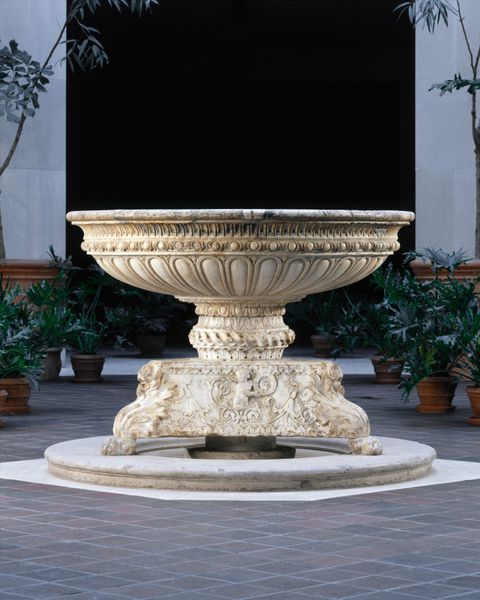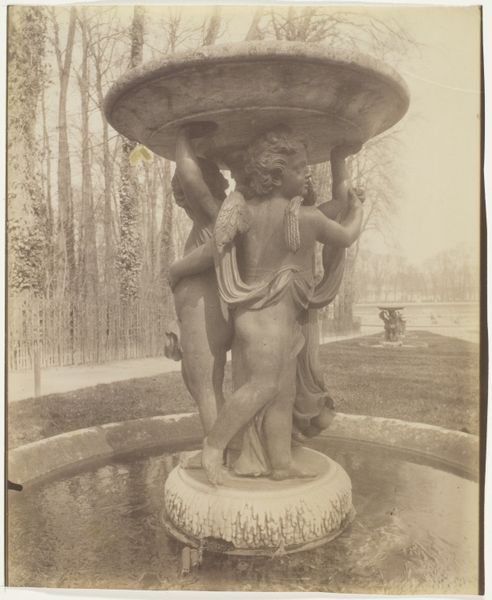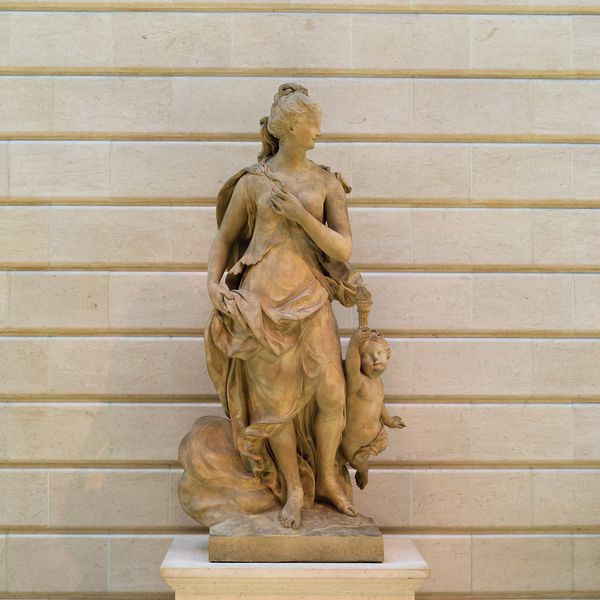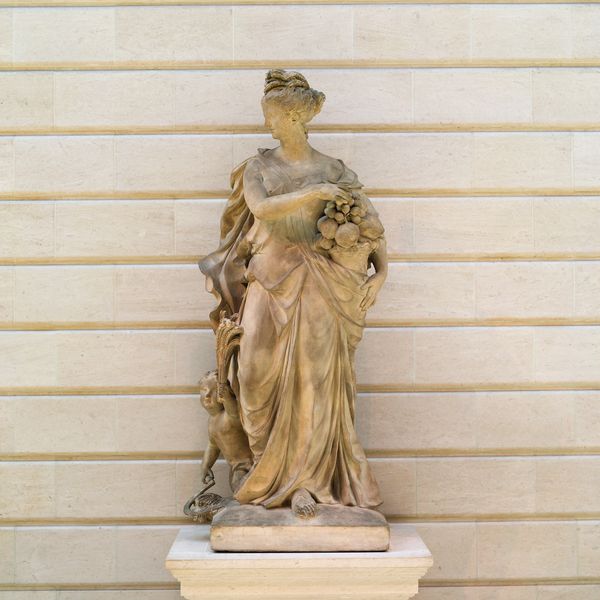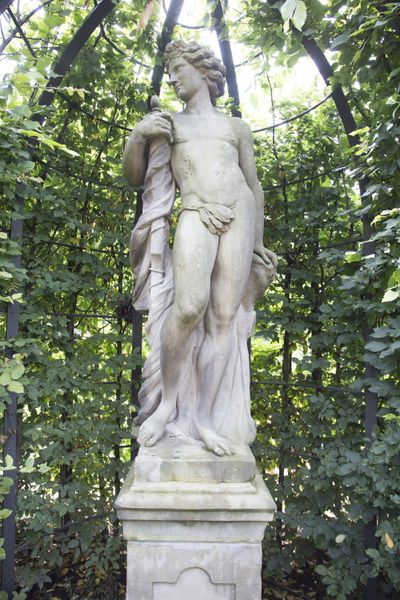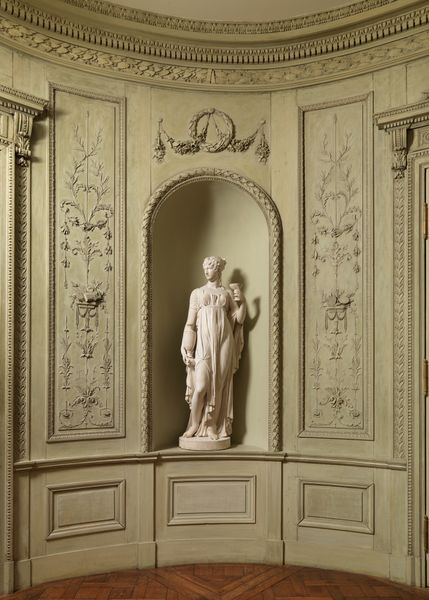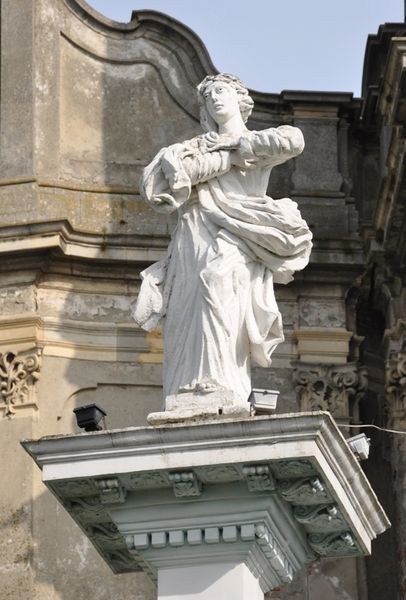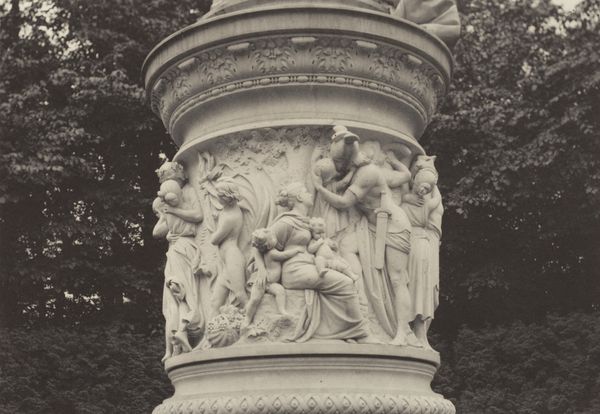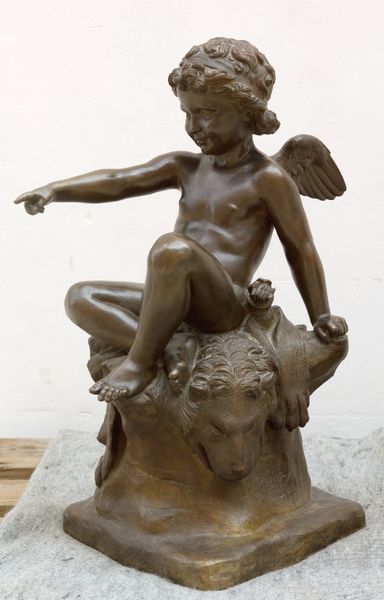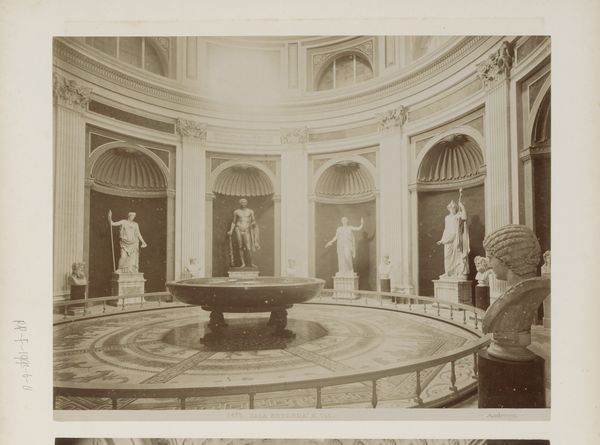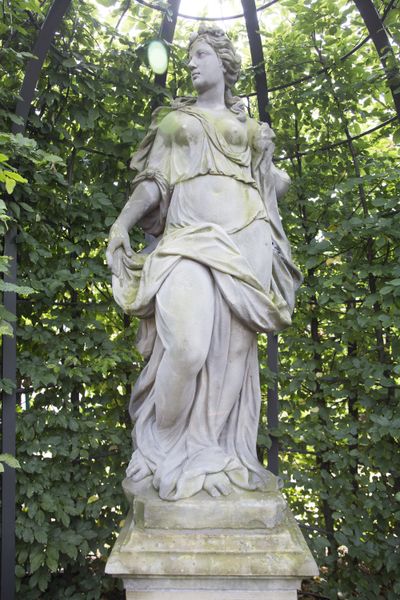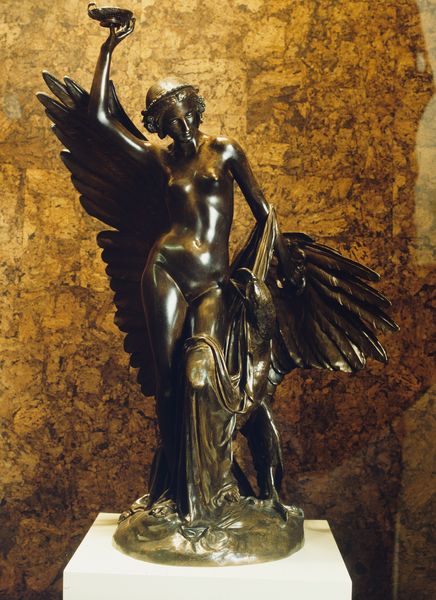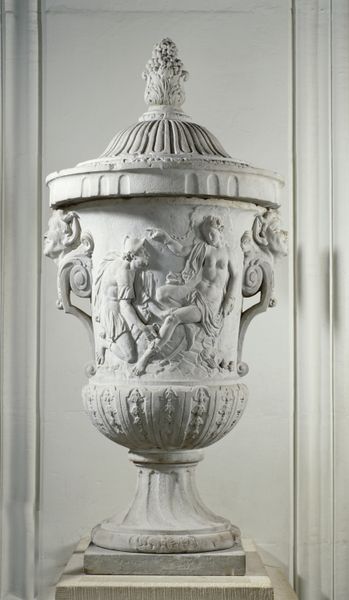
sculpture, marble
#
statue
#
baroque
#
sculpture
#
landscape
#
figuration
#
sculpture
#
marble
#
statue
Dimensions: overall: 119 x 150 cm (46 7/8 x 59 1/16 in.)
Copyright: National Gallery of Art: CC0 1.0
Curator: We're looking at "Cherubs Playing with a Swan," a marble sculpture created between 1672 and 1673 by Jean-Baptiste Tuby. It’s such a captivating piece, radiating playful energy. What are your immediate impressions? Editor: It evokes a feeling of buoyant exuberance! The cherubs intertwined with the swan suggest a carefree innocence, but there is something deeper. Water imagery is central; given the base and assumed existence as a fountain, water hints at fluidity, transformation, even purification. Curator: It’s worth noting that Tuby was deeply embedded in the court of Louis XIV. Fountains like this were potent symbols of power and control, quite literally channeling nature for the King's pleasure. Editor: Right, these cherubs, seemingly innocent, operate within a very structured symbolic framework. Swans, for example, frequently stood for grace, purity, but also vanity, depending on the context. Considering the period, what sort of values would the piece be intending to convey to viewers at that time? Curator: Absolutely. Louis XIV was deliberate in associating himself with classical ideals. This sculpture blends Christian angelic figures with classical motifs, presenting a vision of enlightened, divinely sanctioned rule. It reinforced the monarchy's image, very carefully crafted by artists. Editor: So, are we witnessing a display of dominance more than childlike whimsy? Because the swan in classical myths carries so much significance— think of Leda and the Swan. Perhaps the cherubs are mastering these primal forces of nature, channeling or taming something fundamental. Curator: Precisely. Though on the surface it's playful, sculptures such as this played a crucial part in visually communicating and perpetuating the absolutist power structure of the time. Art was rarely made for art’s sake in those settings. Editor: It underscores the inherent tension within imagery. On the one hand, cherubs invite warmth; the swan brings a certain dignity; but the true "meaning" exists somewhere in the socio-political atmosphere. It makes you wonder how much these intended connotations remain visible today? Curator: A superb point! Appreciating art's inherent connections to its societal circumstances is critical for a fuller grasp of the function of these sculptures in the environment for which they were commissioned. Editor: Exactly! Now I can't help but to think of all of these underlying cultural stories bubbling beneath that pristine marble surface.
Comments
No comments
Be the first to comment and join the conversation on the ultimate creative platform.
